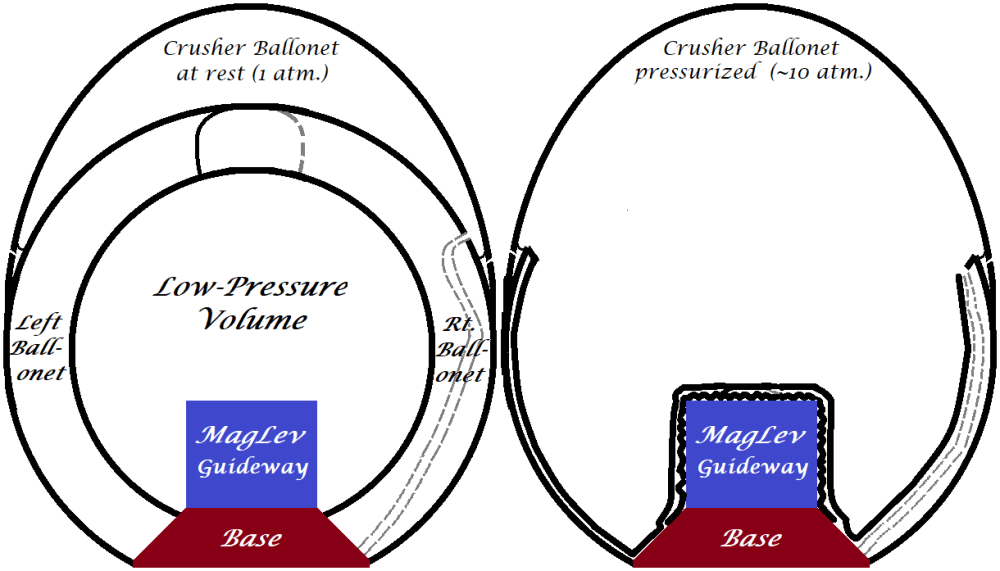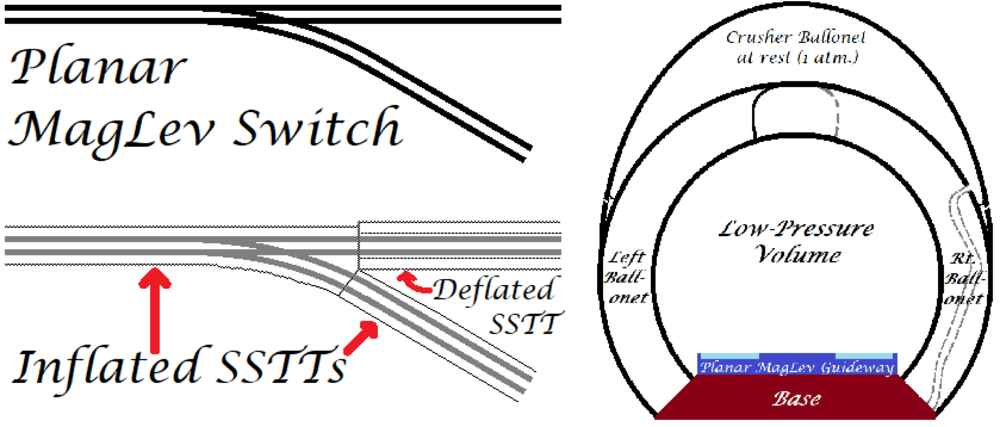There has been a lot of hype over Elon Musk’s Hyperloop. It is a partially-evacuated solid-steel tube in which small-diameter passenger vehicles (pods) travel at high speed.
It has a number of problems. Rescuing passengers in an emergency would involve cutting the heavy steel tube. The vehicle could also collide with the inside call of the tube, the tube can be damaged in an earthquake, or be sabotaged. It is also very difficult to switch Hyperloop vehicles from one track to another. In contrast, a Soft-Sided Transportation Tube (SSTT) can be cut open to rescue passengers. If it is heavily damaged, it could even be cut away, and the underlying propulsion system, such as the MagLev system described in last year’s contest (https://contest.techbriefs.com/2019/entries/automotive-transportation/9404), could be used without the transportation tube, but at a much lower speed.
Another problem with Hyperloop, and many other transportation proposals, is that they consider only the peak speed, and not the door-to-door speed. Rather than being a complete end-to-end system, the SSTTs could be only one part, with the same kind of MagLev guideways being used within the SSTTs, and also outside of it, and the vehicles transferring seamlessly from one to the other. The SSTTs can act as shortcuts (or wormholes) between distant parts of the same MagLev network.
An SSTT is a two-layered tube, with the vehicle travelling in the partially-evacuated inner tube, and the space between that and the outer tube being occupied by inflatable airbags call ballonets. Both tubes are connected to the base of the MagLev guideway, at the bottom, as seen in the left side of the first illustration. Each ballonet is a banana-shaped (when inflated) airbag, and there are many of them between the two tubes, one on each side every 20-40”. When they are inflated (from pipes in the base), the inner tube expands, and a partial vacuum is formed in it. There are also larger ballonets are over the smaller ones, and they can be inflated to “crush” the smaller ballonets and the inner tube, to expel the air and close it off (right side).
Therefore, each segment of an SSTT can be open (inflated) or closed (deflated). To switch from one guideway to another in a Y-shaped junction, two of the SSTTs are open, and one closed. The switching mechanism on the guideway is what actually caused the vehicle to go to the proper guideway, as shown in the second illustration.
Lastly, there are situations where a vehicle has to enter or leave an SSTT. Suppose there is a MagLev vehicle traveling at 300 mph approaching the end of an SSTT, which then opens up. The inrushing air helps to accelerate the vehicle to the higher speed it will use within the SSTT. When the other end of the SSTT opens to let the vehicle out, the inrushing air in the other direction slows it down.
This is a more-viable alternative to Hyperloop.
Like this entry?
-
About the Entrant
- Name:Joshua Levin
- Type of entry:individual
- Software used for this entry:LibreOffice and Paint
- Patent status:pending





